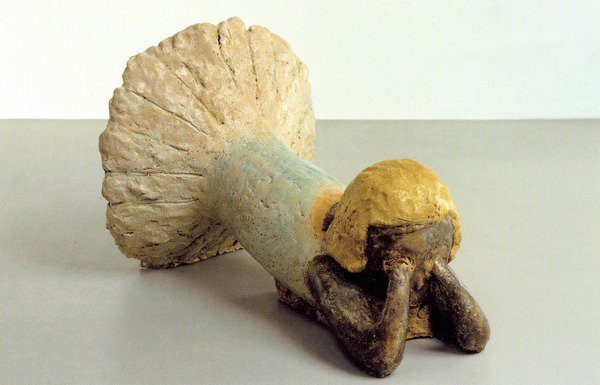Leiko Ikemura
dal 27/10/2011 al 2/2/2012
Segnalato da
27/10/2011
Leiko Ikemura
Galerie Priska Pasquer, Koln
The title of the exhibition, 'Flame & Fire', refers to both the sculptural production process as well as the content of the photo series, 'sh-h', featured in the exhibition.

Galerie Priska Pasquer is delighted to be presenting an exhibition of the work of Japanese artist Leiko Ikemura. The title of the exhibition, "Flame & Fire", refers to both the sculptural production process as well as the content of the photo series, "sh-h", featured in the exhibition.
The 2011 terracotta sculpture "head-r" shows the face of a young woman. The depiction of the female form is one of the artist's central themes. It is present in many aspects of her paintings, drawings, sculptures and photographs, yet Leiko Ikemura refrains from depicting any specific individual; the images are frequently of sleeping, resting, dreaming figures in a state between activity and passivity.
This suspended state of being and the special atmosphere of the overall oeuvre is, among other things, an expression of the meeting of two cultures. The work of Leiko Ikemura is borne of the meeting of Asian aesthetics and Western culture. Her pieces reference fundamental differences in the perception of reality in the Asian tradition, the lack of separation between figure and space, subject and object.
Particularly in paintings, the artist frequently portrays her figures in silhouettes as "a porous, permeable bodies that open into the surrounding areas" (Pia Müller-Tamm). A sense of loneliness and alienation is present in many of her figures, as well as a feeling of weightlessness.
Leiko Ikemura affords another point of access to her figures with the materiality of her terracotta sculpture "head-r". With its emotively modelled surface, the face conveys individual emotions that can be read as expressions of vulnerability and defenselessness. Yet her sculptures also yield an impression of a suspended and open state of being.
Photography has been an independent part of the artist's oeuvre since the early 1980s. The medium provides Leiko Ikemura with the opportunity to vary a theme within a series and articulate it in different forms while also experimenting with the interplay of light and shadow.
"Flame" and "fire" in the exhibition's title refer both to the firing process involved in terracotta sculpture as well as the "sh-h" series of colour photographs from 1992. The series shows silhouettes, bathed in red light, of the heads of women with long hair photographed upside down. In the prints, the physiognomy of the subjects is reduced to the extreme. The heads appear as abstract ambiguous apparitions; we see them as a co-mingling of light and shadow, movement and rest, all the while holding something akin to a candle's flame.
Brief summary
Leiko Ikemura, born in the small city of Tsu in Japan, left Japan in 1972 to move to Spain. Studied painting in Seville 1973-78. Relocated to Switzerland. First exhibitions, including the Bonner Kunstverein. 1983 "resident graphic artist" in Nuremberg. 1985 moved to Cologne. Since 1991, she has been a professor of painting at Berlin University of the Arts. The artist lives and works in Cologne and Berlin.
The artist's works have been widely shown in Germany and abroad. Currently a comprehensive retrospective of her work is being shown in Japan, first at the National Museum of Modern Art, Tokyo, and afterwards at the Mie Prefectural Art Museum, Mie.
Other solo exhibitions include Musée cantonal des Beaux-Arts, Lausanne, 2001; Kunstmuseum Liechtenstein, Vaduz, 2002; Erzbischöfliches Diözesanmuseum Kolumba, Cologne, 2006; Vangi Sculpture Garden Museum, Shizuoka, 2006; Langen Foundation, Neuss, 2007; 2009 August-Macke-Award from the City of Arnsberg.
Galerie Priska Pasquer
Albertusstrasse 9-11, Koln
Di - Fr 11 - 18 Uhr, Sa 11 - 16 Uhr



